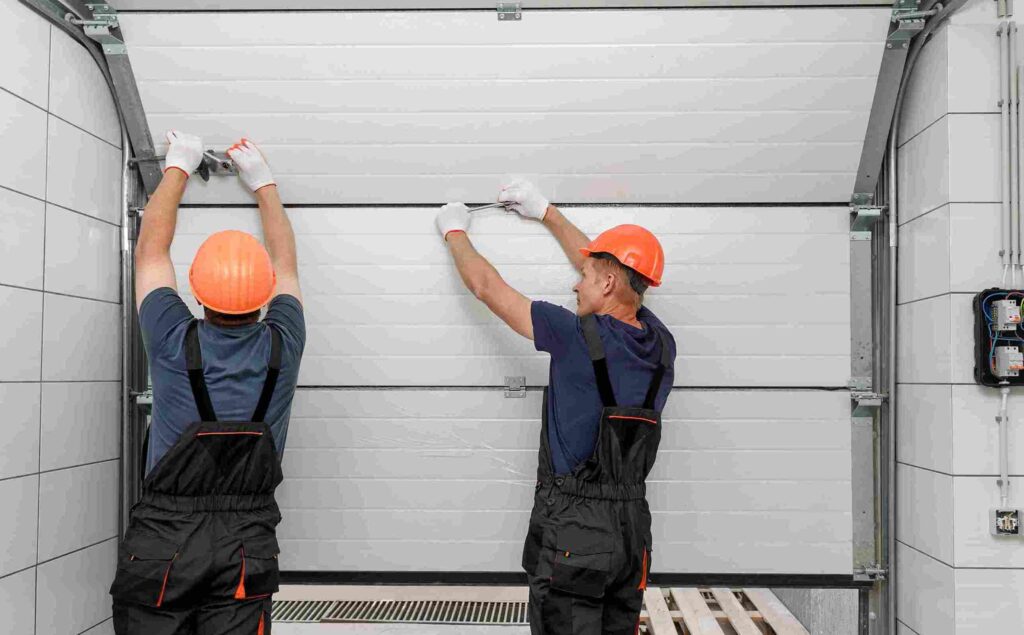1. Seal Cracks and Gaps
- Inspect the Garage Door: Check for any gaps around the edges of your garage door. Rodents can squeeze through surprisingly small spaces. Install weatherstripping around the door to seal these openings.
- Seal Small Holes: Use caulk or expandable foam to seal small holes in the walls, foundation, or around windows. Don’t forget to check the areas where pipes, vents, and cables enter the garage.
- Door Bottom Seal: Ensure the bottom of your garage door has a tight seal. If the current seal is worn or damaged, replace it with a high-quality one that can prevent rodents from crawling underneath.
2. Remove Food Sources
- Properly Store Food: Rodents are attracted to easily accessible food sources. Store pet food, bird seed, or any other food in sealed, airtight containers.
- Clean Up Trash: Keep trash cans tightly sealed and dispose of garbage regularly. Make sure no food scraps are left in the garage, as these will attract rodents.
- Eliminate Bird Feeder Overflow: If you have a bird feeder near your garage, clean up any seeds that spill onto the ground, as they can become a food source for rodents.
3. Maintain a Clean Garage
- Declutter: Rodents like to hide in cluttered areas where they can nest and stay out of sight. Keep your garage organized by storing items off the floor and in plastic bins or containers.
- Regular Cleaning: Sweep and clean the garage regularly to remove food crumbs and debris that may attract rodents. This also allows you to spot any signs of rodent activity early on.
4. Use Rodent Deterrents
- Mice and Rat Repellents: There are various rodent repellents available, such as sprays or ultrasonic devices that emit sounds rodents find unpleasant. Consider using peppermint oil, which rodents dislike, by soaking cotton balls and placing them around your garage.
- Essential Oils: Strong-smelling oils, like peppermint, eucalyptus, or citronella, can act as natural deterrents. Place cotton balls soaked in these oils in areas where rodents might try to enter.
5. Install Rodent-Proof Barriers
- Wire Mesh and Steel Wool: For larger holes, use steel wool or heavy-duty wire mesh to block openings. Mice can’t chew through these materials, and they provide a solid barrier to keep them out.
- Rodent-Proof Vents: If your garage has vents, install rodent-proof vent covers that prevent rodents from getting inside. Some vents are specifically designed to keep small animals out.
6. Keep Landscaping Trimmed
- Trim Shrubs and Trees: Rodents are known to climb, so keep any trees or bushes around your garage trimmed back. This reduces the likelihood of them using branches as a pathway to your garage.
- Clean Up Leaves and Debris: Rodents can hide in piles of leaves or debris around your garage, so make sure these areas are kept clear.
7. Trap and Remove Rodents
- Use Traps: If you’ve already spotted signs of rodents, use snap traps or live traps to capture them. Make sure to place traps along walls or near potential entry points, as rodents tend to travel along walls.
- Baiting: Use peanut butter, sunflower seeds, or other rodent-friendly bait to attract them to the traps. Check traps regularly and dispose of any caught rodents immediately.
8. Consult a Professional
- If you have a significant rodent problem, it might be worth calling a pest control expert. They can assess your garage, set up more sophisticated traps, and offer advice on rodent-proofing your space.
By taking these steps, you can significantly reduce the chances of rodents invading your garage, especially during the cold Canadian winters!
